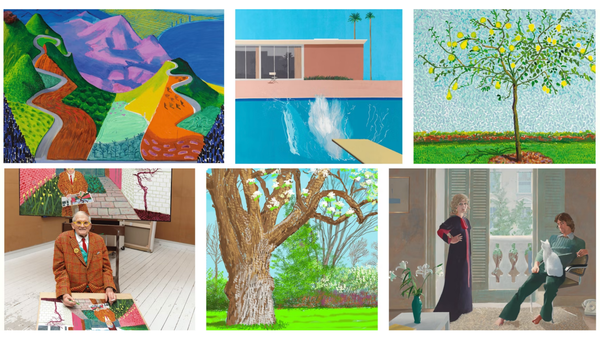How About Spending Some Time in Claude Monet's House?
Claude Monet’s house in Giverny, with its iconic gardens, was a major inspiration for his later works, especially his Water Lilies series. Restored after his death, it now serves as a museum, offering visitors a chance to explore the home and gardens that shaped the painter's vision.
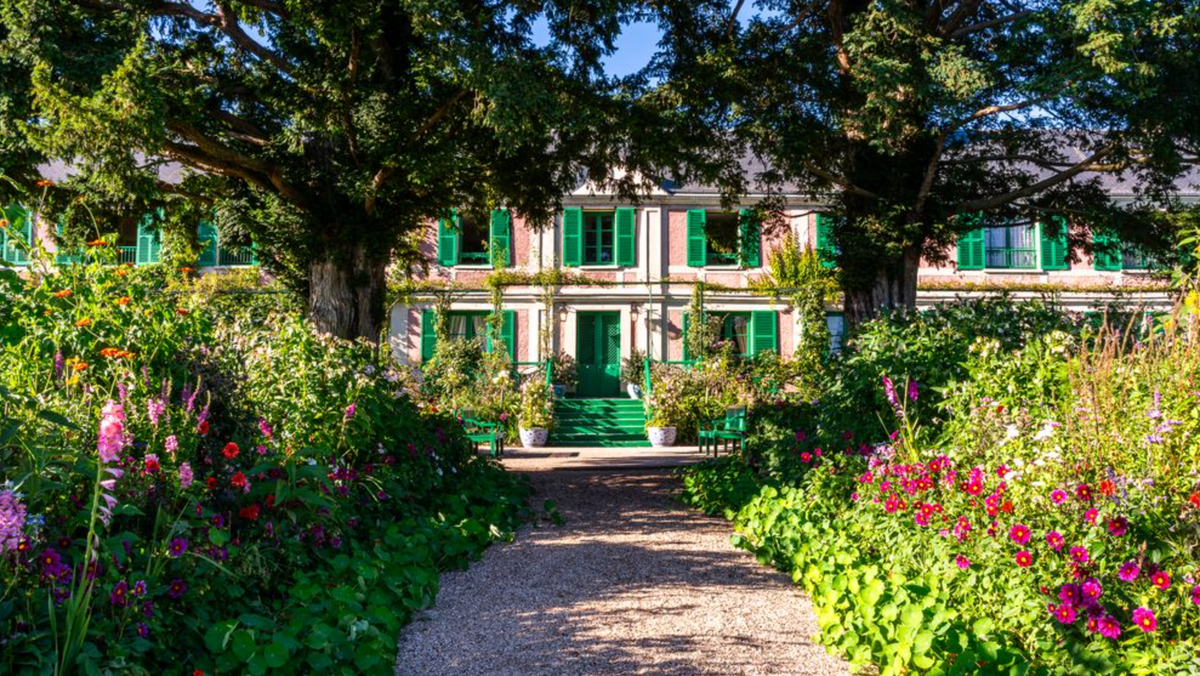
In the charming village of Giverny, approximately 80 kilometres from Paris, sits the former home of Claude Monet, one of the most influential and beloved painters in the history of Western art. Known as the father of Impressionism, Monet spent the last four decades of his life in this rural retreat, which became both a sanctuary and a source of inspiration for his work. Today, Monet’s house and gardens are preserved as a museum, offering visitors a glimpse into the artist’s personal life and the landscapes that shaped his vision.
Claude Monet moved to Giverny in 1883, after achieving success with his distinctive style of painting that focused on the play of light and colour in nature. He rented a house in the village and eventually purchased it in 1890, transforming the property into a haven of beauty and tranquillity. Giverny provided Monet with the perfect environment to immerse himself in the natural world, which was the foundation of his artistic practice. It was here that he developed his passion for gardening, which would play a pivotal role in the evolution of his later works.
Monet carefully designed his garden with the same meticulous attention to detail that he applied to his paintings. Over the years, he cultivated a variety of plants, flowers, and trees, creating a living canvas that would inspire some of his most famous works, including the celebrated Water Lilies series.
Monet’s house is a charming, sprawling building with green-coloured shutters and a distinctive pink façade that reflects the light of the surrounding landscape. The interior of the house is filled with personal touches that offer insight into Monet’s character, tastes, and daily life.
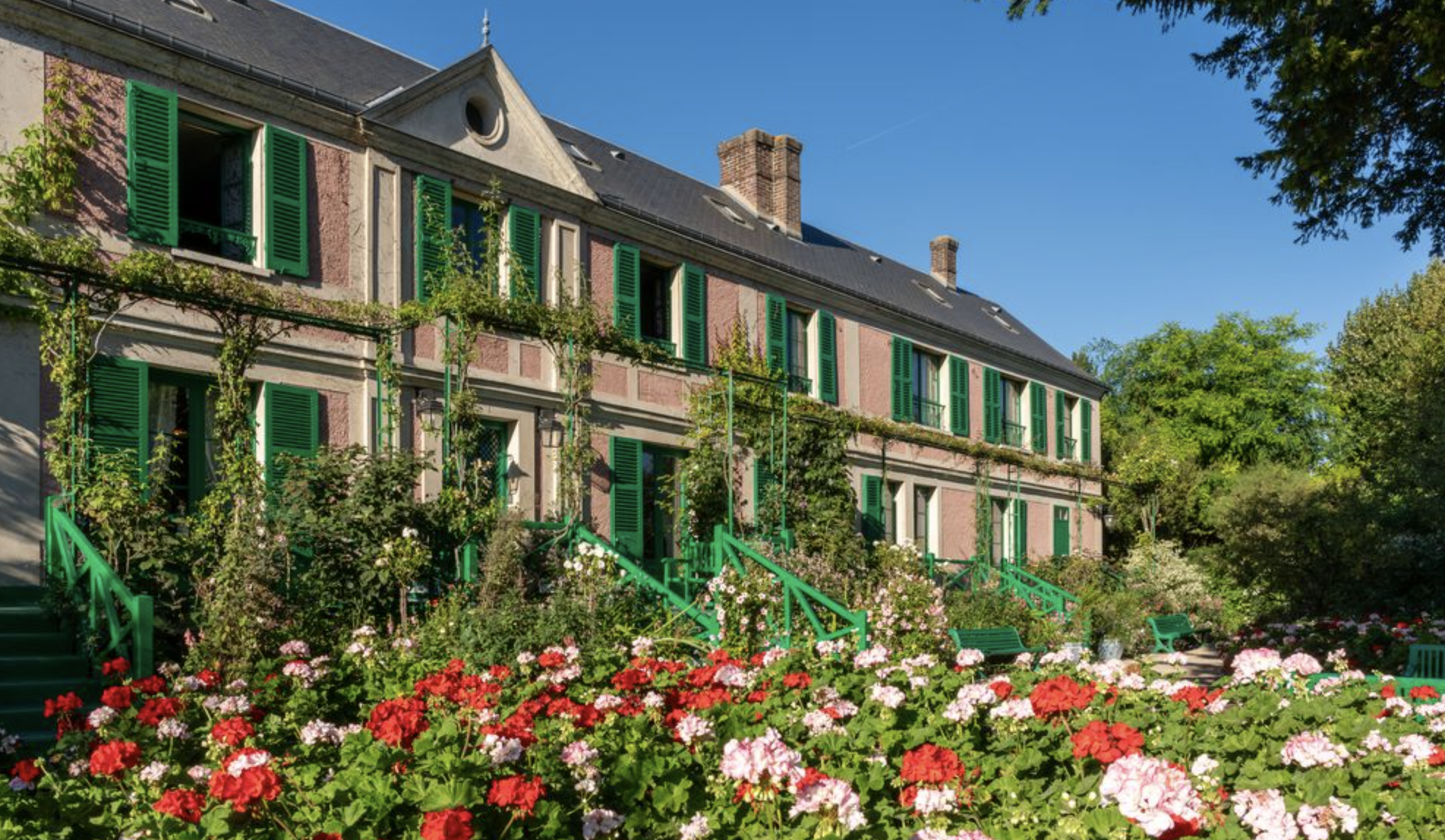
One of the most striking features of the house is Monet’s extensive collection of Japanese prints, which adorn the walls of nearly every room. Monet was an avid collector of Japanese art, particularly ukiyo-e woodblock prints by artists such as Hokusai and Hiroshige, whose work had a profound influence on his approach to composition and perspective. These prints, with their emphasis on nature, seasonal changes, and flowing lines, echoed many of the themes Monet explored in his paintings.
The house includes Monet’s studio, where he worked on many of his masterpieces. The room has been preserved with his easels and brushes, evoking the creative atmosphere in which he painted. However, Monet eventually outgrew the indoor space and built a larger studio nearby, allowing him to work on his massive canvases, particularly those of his water lilies.
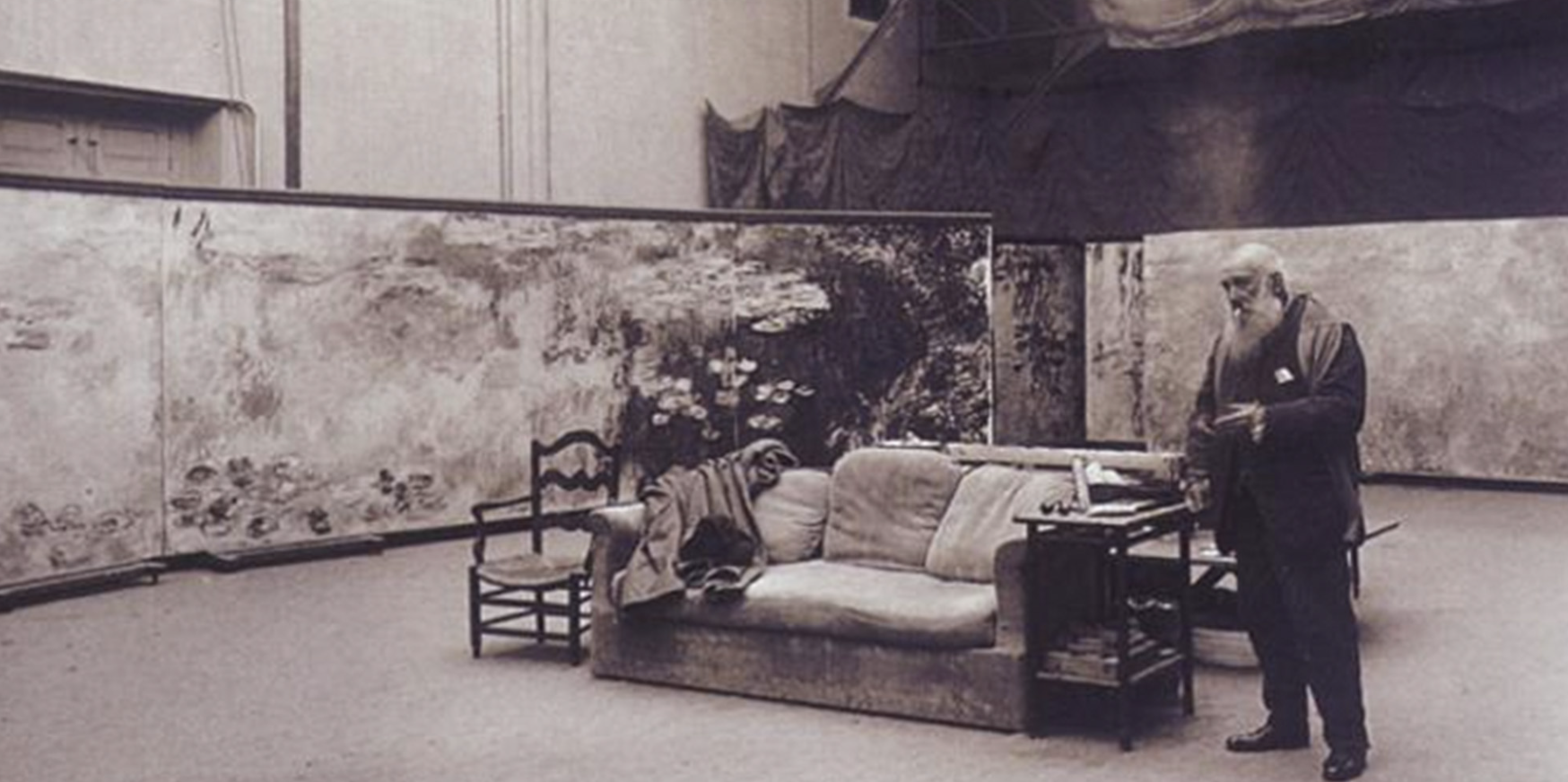
The dining room, painted in bright yellow, is another highlight of the house. It reflects Monet’s love of bold colours, with its warm and inviting tones. The adjacent kitchen, with its blue tiles and copper pots, gives visitors a sense of the artist’s domestic life, where he hosted friends, family, and fellow artists such as Pierre-Auguste Renoir and Édouard Manet.
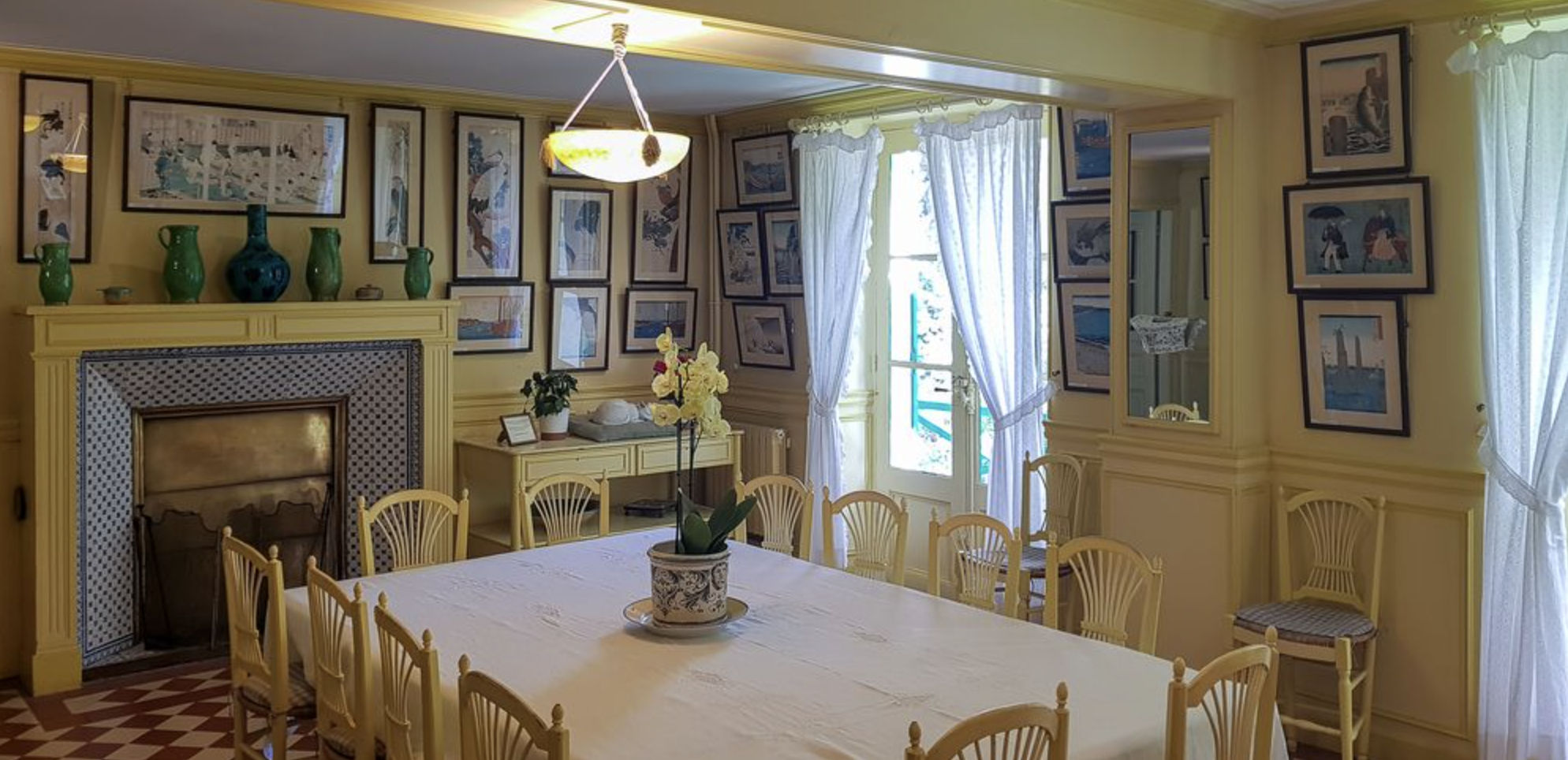
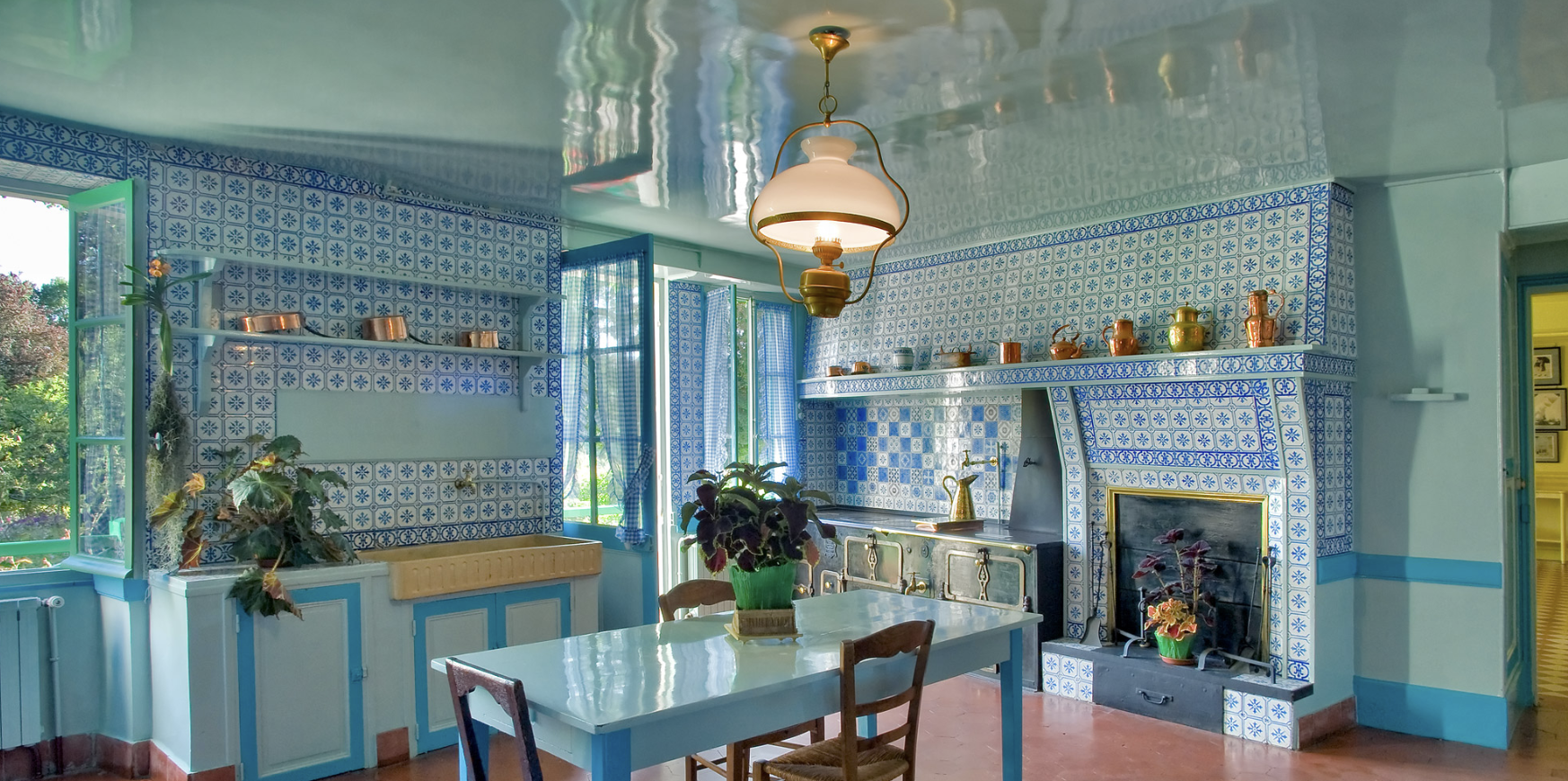
Monet’s gardens are undoubtedly the crown jewel of Giverny, and they are widely regarded as one of the most beautiful and famous gardens in the world. Divided into two distinct parts, the gardens reflect Monet’s vision of nature as a source of infinite inspiration.
The Clos Normand, located directly in front of the house, is a vibrant, flower-filled garden that bursts with colour throughout the year. Monet meticulously planned the layout of the garden, arranging flowers in beds according to their height and hue. Roses, tulips, irises, and poppies bloom in abundance, creating a harmonious symphony of colours. Monet’s approach to gardening was as creative as his painting, combining textures, forms, and colours to create a visual spectacle.
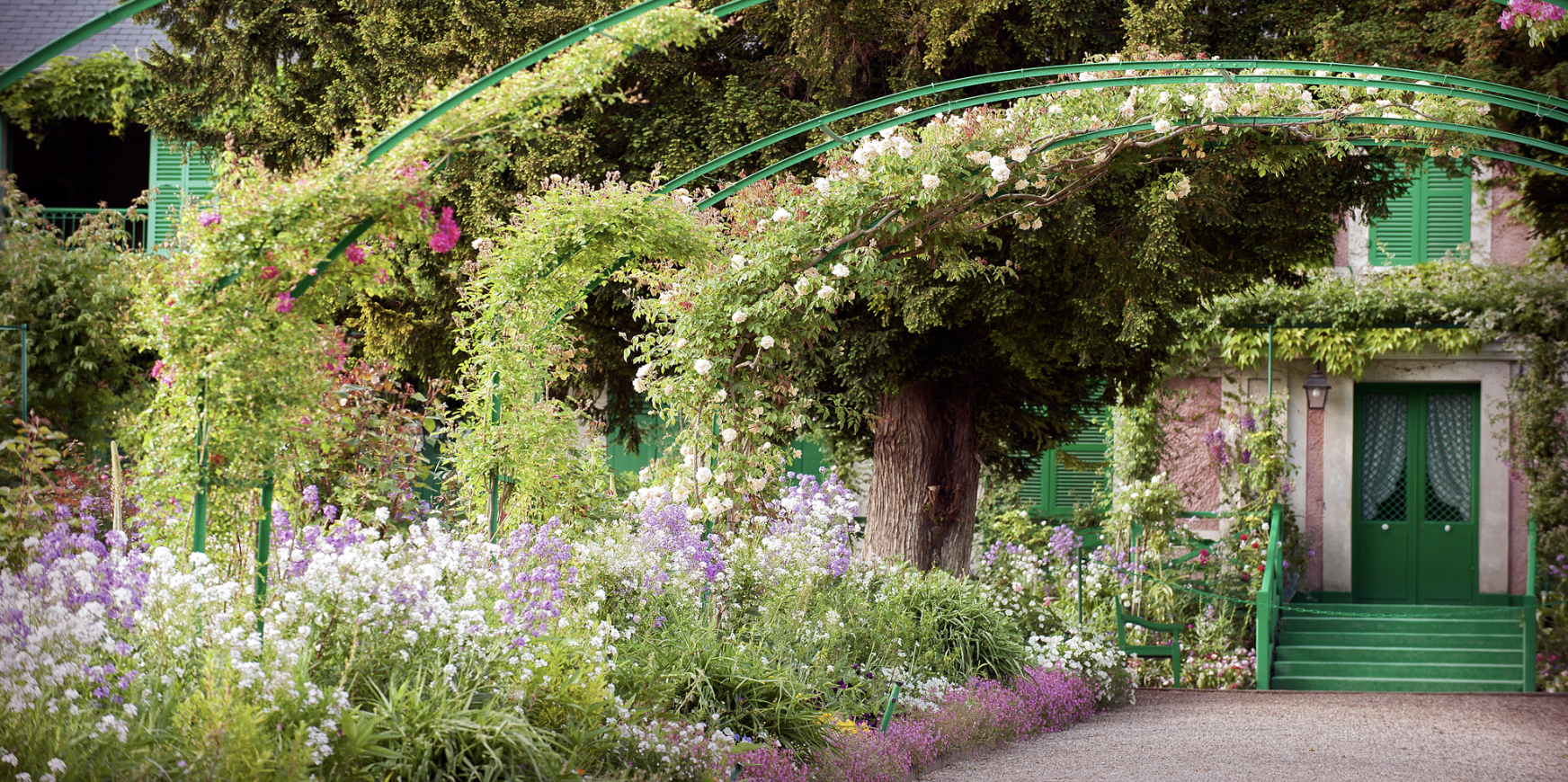
Beyond the Clos Normand lies the Japanese-inspired Water Garden, which Monet created by diverting a nearby river. This tranquil garden, with its iconic Japanese bridge draped in wisteria and its pond filled with water lilies, was Monet’s primary muse in his later years. The reflections of the sky, clouds, and surrounding plants on the still surface of the water became a central theme in his work, particularly in his series of Nymphéas (Water Lilies) paintings. These paintings, which capture the ever-changing effects of light on water, are now among the most famous and celebrated works in the history of art.
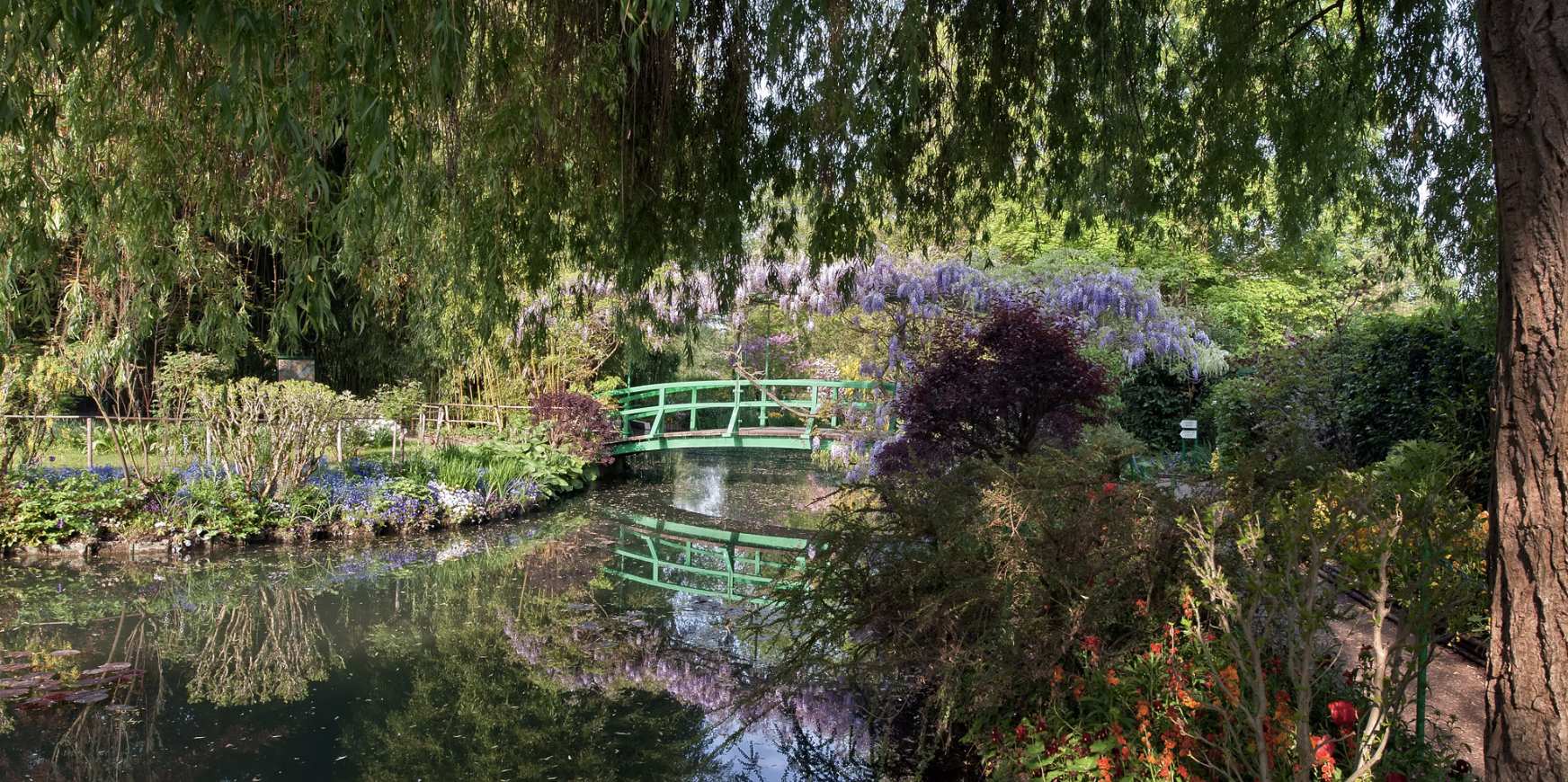
Monet spent hours in this garden, observing how the light changed throughout the day and across seasons. His obsession with capturing the fleeting moments of nature led to his exploration of different perspectives, as seen in his Japanese Bridge series, where the same motif is painted in various light conditions and atmospheric effects. This relentless pursuit of the ephemeral qualities of light and colour became the hallmark of his later work.
Monet lived and worked in Giverny until he died in 1926, and it was here that he produced some of his most iconic paintings. The house and gardens at Giverny became a lasting testament to the artist’s profound connection with nature, a relationship that shaped his artistic legacy.
After Monet’s death, the house fell into disrepair until it was restored by the Académie des Beaux-Arts in the 1970s, with support from the American philanthropist Gerald van der Kemp. Today, Monet’s house and gardens are preserved as a museum, attracting hundreds of thousands of visitors each year who come to experience the beauty that inspired one of the greatest painters of all time. For those unable to visit in person, you can explore Monet's home and gardens through this virtual tour, offering an immersive glimpse into the world of the artist.
The Fondation Claude Monet, which manages the estate, has meticulously maintained the gardens to reflect Monet’s original vision, ensuring that visitors can see them much as the artist did in his lifetime. Walking through the lush greenery and vibrant flowerbeds, it’s easy to imagine Monet setting up his easel to capture the delicate interplay of light and colour.
Claude Monet’s house and gardens in Giverny are more than just a picturesque retreat; they are a living embodiment of the artist’s vision and passion for nature. The house, with its intimate rooms and personal collections, offers a glimpse into Monet’s private world, while the gardens provide a sensory experience that brings to life the natural beauty that inspired his greatest works. For art lovers, a visit to Giverny is a journey into the heart of Impressionism, where the boundaries between art and nature dissolve, leaving behind a legacy of timeless beauty.




